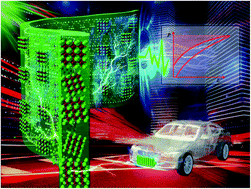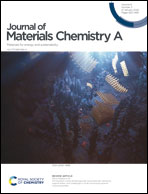Design strategy of barium titanate/polyvinylidene fluoride-based nanocomposite films for high energy storage
Abstract
With the problems of resource consumption and environmental harm, increasing attention has been paid to the conversion and storage of energy. The development of flexible nanodielectric materials with high energy density is one of the most active academic research directions in the field of functional materials and has important practical significance. Barium titanate/polyvinylidene fluoride- (BT/PVDF-) based nanocomposite film possesses excellent physicochemical properties and electrical properties, is a type of composite material with excellent energy density and has great application potential. In this paper, related studies on high energy density BT/PVDF-based nanocomposite films are classified and summarized. The possible mechanisms for the enhancement in energy density of BT/PVDF-based nanocomposite films under different strategies are discussed. This expected result of this paper is explaining the mechanisms of the increase in energy density of BT/PVDF-based nanocomposites and providing a new idea for the development of BT/PVDF-based nanocomposites with higher energy density. Finally, BT/PVDF-based nanocomposite for energy storage films are summarized, providing an outlook for future development and the problems to be solved. It is believed that future research may be directed toward optimizing raw materials, multiphase doping, three dimensional modulation, and optimization of process, of which three dimensional modulation will become the focus.

- This article is part of the themed collections: Journal of Materials Chemistry A Recent Review Articles and Journal of Materials Chemistry A HOT Papers


 Please wait while we load your content...
Please wait while we load your content...